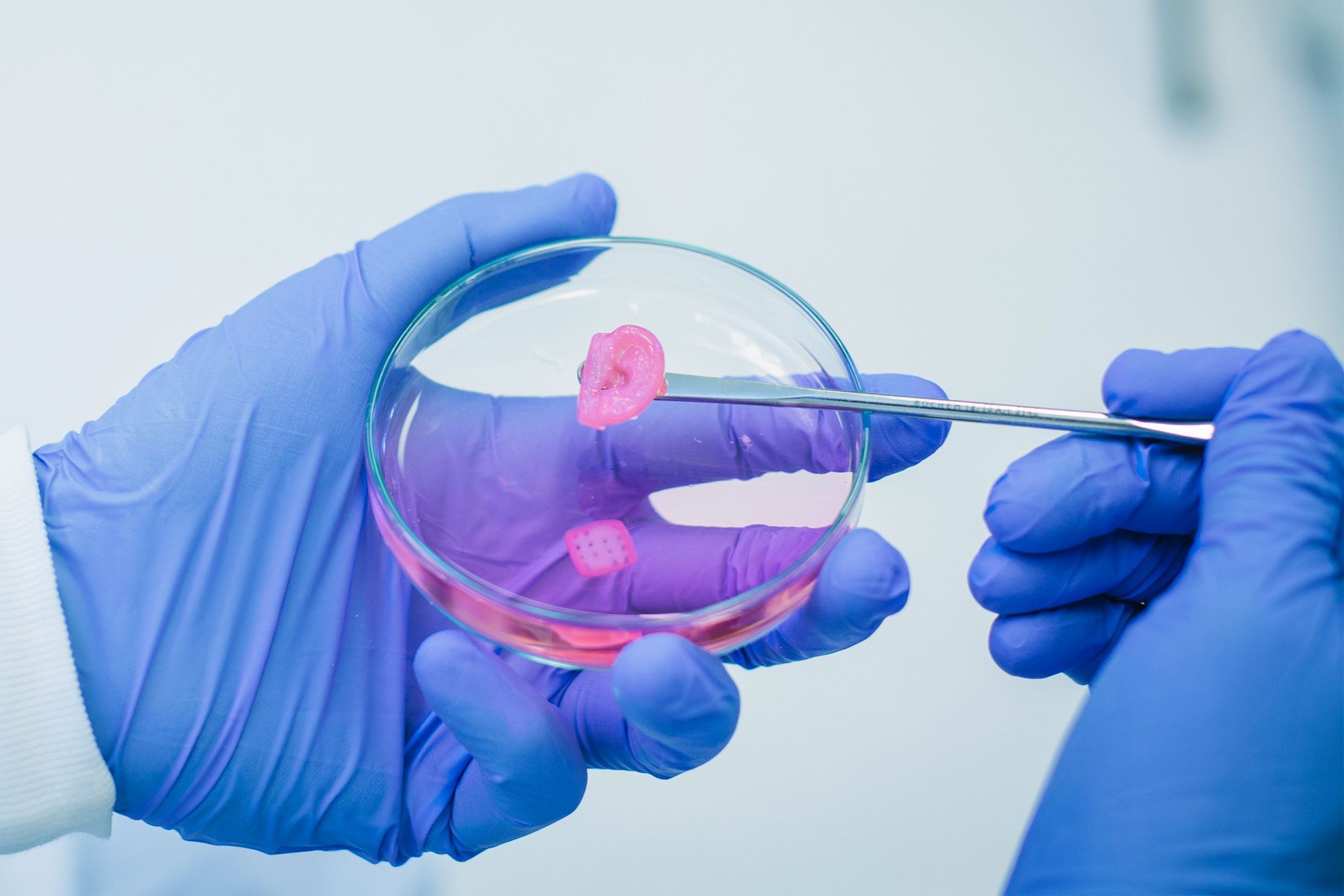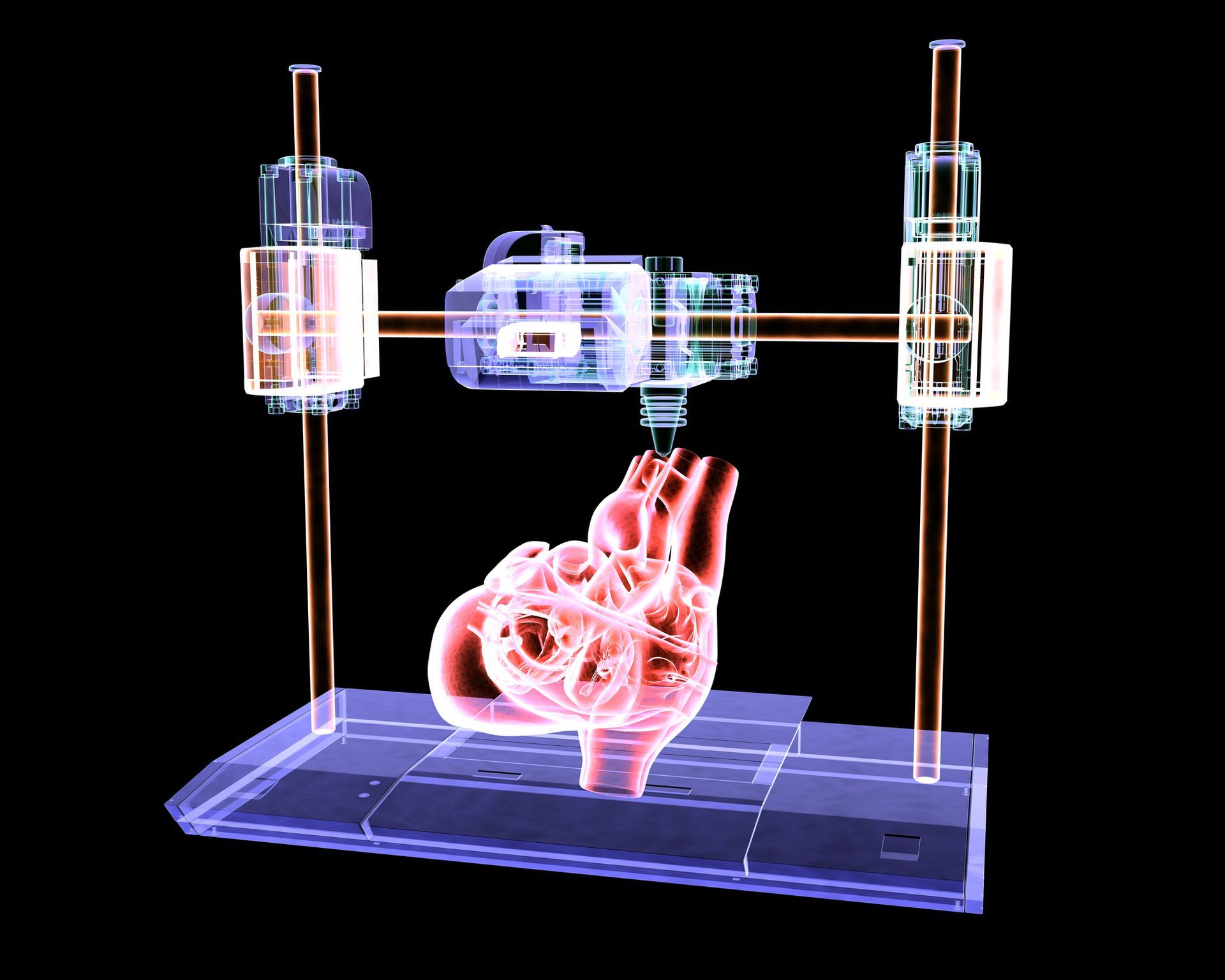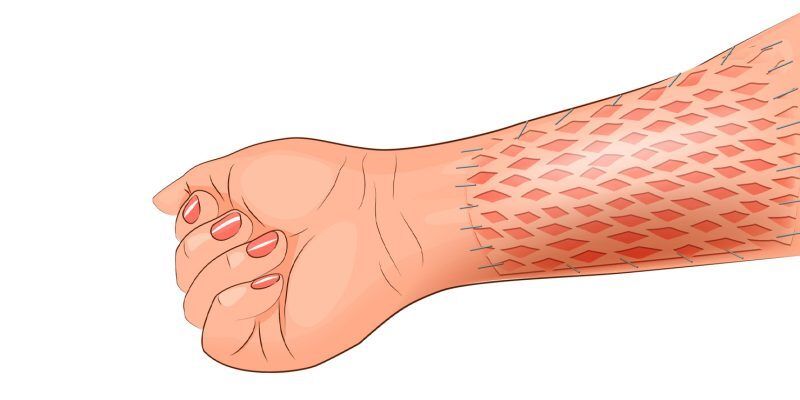
Bioprinting.
It really does sound like something out of a sci-fi thriller, doesn't it?
However, it has become a fast-emerging technology that has perhaps more ramifications for personal health than any other today.
To be clear, bioprinting remains squarely in the "rapidly developing" category. Bioprinting technology, however, has been at the forefront recently. A woman in Korea recently became the first human to receive a 3D-printed organ - in this case, a windpipe - that was created using other peoples' stem cells.
But before we get into the examples below, let's first get on the same page by defining bioprinting.

The book definition of bioprinting is the "use of 3D printing technology with materials that incorporate viable living cells." Use cases vary (you can see some below) but a simple example is reconstructive surgery.
It's impossible to overstate how the research can change lives, especially in cases of skin grafting and disease research. Although it's important to acknowledge ethical and legal concerns related to bioprinting, we are going to look at the possibilities this week.
If you'd like to see a successful use case, you can read a student essay at The New York Times about a boy who has lived with a 3D-printed bladder that used pieces of his failing bladder for years.
From that article: "Bioprinters work similarly to traditional 3-D printers; however, instead of depositing layers of plastic, they deliver layers of biomaterial which includes living cells."
Let's get into examples of potential use cases.

Bioprinting: Drug Discovery and Testing - Perhaps the biggest use case for bioprinting advocates sits in the research area. Thanks to bioprinting, researchers can create complex human tissues like mini-livers, mini-lungs, and even mini-brains.
That's amazing. These miniature tissues can be used to test the efficacy and safety of new drugs in a more human-relevant way than traditional cell cultures.
Bioprinting: Personalized Tissue Engineering - This one is what we were talking about above. Bioprinting offers the potential to create personalized tissues and organs for transplantation. By using a patient's own cells, the risk of rejection can be significantly reduced.
Right now, for example, 10-20 percent of kidney transplants result in rejection. In addition, bioprinting has the potential to revolutionize the field of organ transplantation further by addressing the critical shortage of donor organs.

Bioprinting: Skin Grafting - Skin grafts for burn victims might be the most widely recognized use case of bioprinting. The technology has also been used to help patients suffering from large skin wounds.
This can significantly improve healing times and reduce the need for painful skin harvesting procedures. As you can see from each of these examples, increased quality of life is the goal of the research.
Bioprinting: Cartilage and Bone Repair - In the realm of "exploratory use cases, bioprinting is being explored for creating scaffolds for cartilage and bone repair. These scaffolds can be seeded with a patient's cells to promote tissue regeneration.
Bioprinting: Cancer Research - Finally, bioprinting can be used to create tumor models that mimic the complex structure and cellular organization of real tumors.
When you consider that nearly 2 million new cancer cases were diagnosed in 2021 - and 600,000 deaths - it's hard to ignore that bioprinting could have a significant effect on the statistics, even if it's just one tool in a research tool belt.
This can be a valuable tool for researchers to study cancer progression and develop new cancer therapies.




